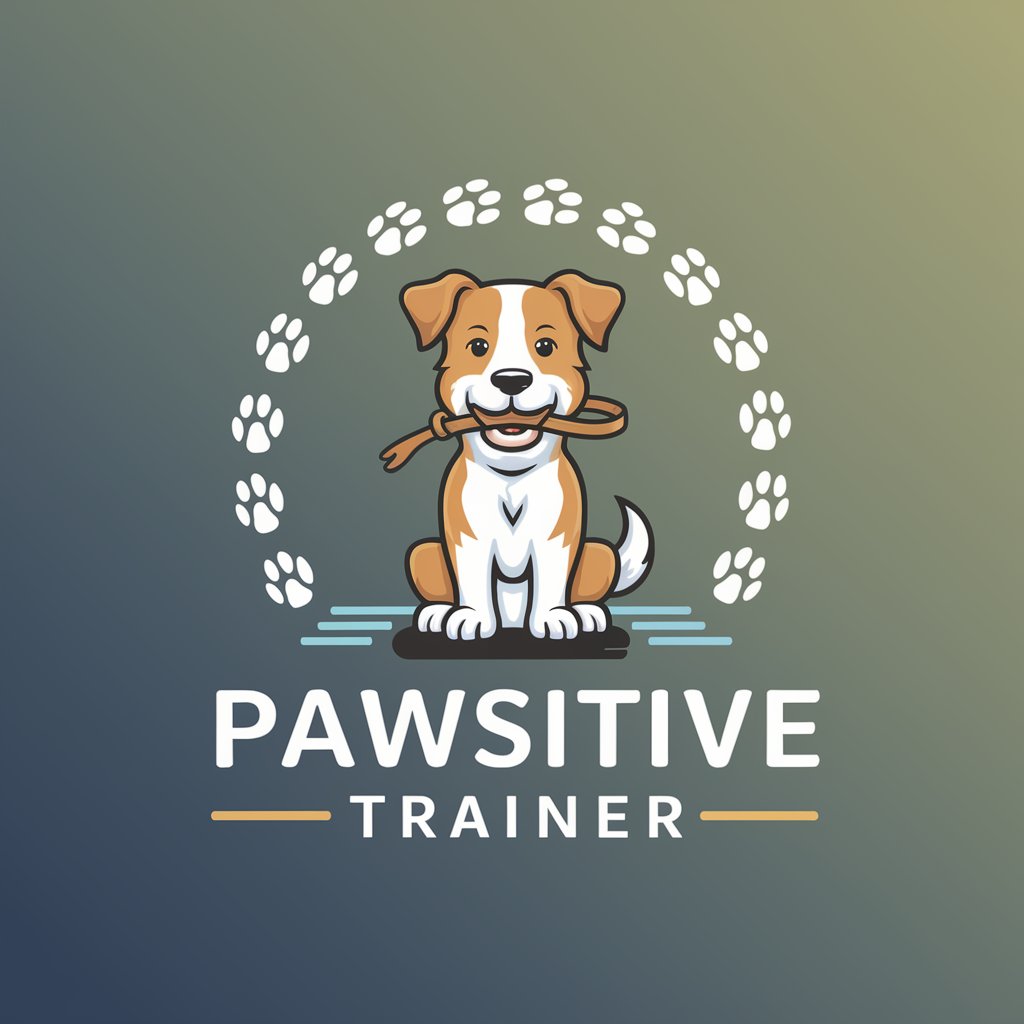Pawsitive Trainer - Customized Dog Training

Hello! Need help with your dog training?
AI-Powered Personal Dog Trainer
How can I stop my dog from...
What's the best way to teach my dog...
Why does my dog keep...
Can you help me understand why my dog...
Get Embed Code
Overview of Pawsitive Trainer
Pawsitive Trainer is designed to offer specialized dog training advice that adapts to a variety of dogs and training situations. This tool combines principles of positive reinforcement with other effective training methodologies to provide tailored advice. Rather than applying a one-size-fits-all approach, it focuses on understanding the unique characteristics and needs of each dog to suggest practical training strategies. For example, in a scenario where a dog struggles with leash pulling, Pawsitive Trainer would assess factors like the dog’s breed, age, and previous training history to recommend specific leash training techniques and tools that could effectively curb this behavior. Powered by ChatGPT-4o。

Core Functions of Pawsitive Trainer
Behavioral Correction
Example
Using positive reinforcement to address excessive barking.
Scenario
In a situation where a dog barks excessively at visitors, Pawsitive Trainer would guide the owner through establishing a quiet command, rewarding the dog for silence, and gradually increasing the duration of expected quietness before giving a treat.
Skill Development
Example
Teaching commands such as 'sit', 'stay', or 'come'.
Scenario
For a young puppy learning to 'sit', Pawsitive Trainer provides step-by-step guidance on using a treat to guide the puppy's nose upwards and backwards, encouraging the sit posture, followed by immediate positive reinforcement upon success.
Preparation for Specific Challenges
Example
Preparing a dog for a calm experience at the vet.
Scenario
For a dog that exhibits anxiety during veterinary visits, Pawsitive Trainer advises on desensitization techniques, such as visiting the vet's parking lot to associate it with positive experiences (like treats or play) before an actual appointment.
Target Users of Pawsitive Trainer
New Dog Owners
Individuals who have recently adopted a dog and are looking for foundational training tips to start their new pet on the right foot, ensuring a well-behaved companion.
Experienced Owners Facing New Challenges
Owners who have experience with dogs but are facing new behavioral challenges or introducing their pets to new situations, such as a new baby in the home or moving to a city.
Dog Trainers Seeking Additional Resources
Professional dog trainers looking for supplementary training techniques or alternative solutions to enhance their current training regimens or address specific client issues.

Using Pawsitive Trainer: A Step-by-Step Guide
Step 1
Visit yeschat.ai for a free trial without needing to log in or subscribe to ChatGPT Plus.
Step 2
Select the 'Pawsitive Trainer' option from the available tools to start interacting directly with the chatbot.
Step 3
Begin your session by typing a specific question or describing a dog training issue you're facing. Use clear and detailed descriptions for more tailored advice.
Step 4
Review the advice provided. You can ask follow-up questions or request further clarifications to delve deeper into the training techniques suggested.
Step 5
Utilize the tips and training methods regularly. Consistency is key in dog training, so apply the techniques consistently to see improvements.
Try other advanced and practical GPTs
Frag das Gesetz
AI-powered German Law Assistant

Geldanlage mit Aktien, Investmentfonds und ETFs
Empowering smart investment with AI

nogAI
Empowering creativity with AI, Lindsay's way

Frag Dirk - Das Dirk Kreuter GPT
Empowering your sales and motivation with AI-driven advice.

Frag ein Einhorn
Instant answers, endless creativity.

Frag den Arzt | Dein Medizinischer Assistent 👨⚕️
Unlocking Medical Knowledge with AI

Personal Trainer
Optimize Your Fitness Journey with AI

Voice of Samael
Explore Profound Truths with AI

Samuel Strumwell
Master Music with AI

Democracrypto
Revolutionizing Voting with AI

samuel beckett
Dive deep into the world of Samuel Beckett

Santa Clarita Guide
Navigate Santa Clarita with AI Ease

Frequently Asked Questions About Pawsitive Trainer
What makes Pawsitive Trainer different from other dog training tools?
Pawsitive Trainer combines various training methods with a focus on positive reinforcement, offering adaptable solutions rather than a one-size-fits-all approach. This allows for a more personalized training experience that can cater to the unique needs of each dog and situation.
Can Pawsitive Trainer help with aggressive behavior in dogs?
Yes, Pawsitive Trainer offers guidance on managing aggressive behavior. Techniques focus on understanding the root cause of aggression and applying specific behavioral strategies to mitigate this behavior, promoting safety and positive interactions.
Is there a way to track progress with my dog using Pawsitive Trainer?
While Pawsitive Trainer itself does not track progress, it provides advice on setting up a training log or journal. Keeping track of training sessions, behaviors noted, and progress made over time is highly recommended to monitor improvements and adjust strategies as needed.
How often should I interact with Pawsitive Trainer for the best results?
Interacting regularly, such as weekly or bi-weekly, is ideal. This frequency helps maintain consistency in training and allows you to quickly address any new or ongoing issues as they arise.
What should I do if the advice provided doesn't seem to work?
If the strategies suggested do not yield the expected results, it's important to reassess the situation with more detailed information. Adjustments to the approach can be made based on further insights into the dog's behavior and environmental factors.
